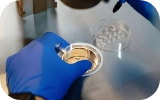Surgical Sperm Retrieval Techniques: Options and Procedures Explained

In some cases, a man's testes produce sperm, but his semen doesn't contain any. Advances in medical techniques have enabled men even with this condition to have children of their own. Surgical sperm retrieval is usually a specialized technique used in an IVF cycle. In such cases, the sperm is harvested directly from the testicles and then used to fertilize an egg in a laboratory.
There exist many different methods of surgical sperm retrieval. To identify the best method, a certain amount of testing is required before the procedure. Testing is also required to check whether the testicles produce sperm or not. Cases in which sperm may be retrieved surgically from the testicles include:
- Sperm production is hampered by physical obstructions
- The man has had a vasectomy that cannot be reversed
- The man has no vas deferens
- The man has a blockage in the tubes that carry sperm from the testicles to the penis - this may be caused by testicular cancer. In such cases, the sperm must be retrieved before treatment begins for cancer.
Ways Sperm can be Surgically Retrieved
The technique used to retrieve sperm depends on whether an obstruction causes the absence of sperm in semen or not.
When there is an Obstruction
There are four different techniques that may be used to harvest sperm cells if an obstruction is keeping them from being released. Of these, three may be performed under local anaesthesia while the fourth is performed under general anesthesia.
- Testicular Sperm Aspiration (TESA)
This involves pulling out a fluid containing sperm from the testicles through a needle. - Percutaneous Epididymal Sperm Aspiration (PESA)
This also involves using a needle and a syringe to extract the fluid containing sperm. However, in this case, the needle is inserted into the epididymis. - Percutaneous Biopsy of the Testis (Perc biopsy)
This method of sperm retrieval is similar to TESA but it involves the use of a larger needle. The larger needle is used to biopsy a part of the testicular tissue. In this way, a larger amount of sperm sample is harvested. - Microsurgical Epididymal Sperm Aspiration (MESA)
This is an open surgery wherein operating microscopy is used to locate the tubules in the epididymis. This allows the doctors to retrieve a large sperm sample. This procedure is believed to give the largest sperm samples and also produces more motile sperm. Thus, the success rate of IVF or ICSI that uses this technique may be higher.
When there is No Obstruction
In cases where there is no obstruction in the vas deferens and semen does not contain any sperm, the man usually has a problem producing sperm. In such cases, the amount of sperm produced may be quite limited and hence more invasive retrieval techniques are needed which include:
Testicular Sperm Extraction (TESE)
This is a surgical procedure that involves inserting a needle into the scrotum and removing a small amount of testicular tissue from it. Usually, this is taken from several different parts of the testicles. A microscope is then used to identify individual sperm and isolate them from the remaining tissue.
Microdissection TESE
This procedure is very similar to a TESE. However, in this case, a microdissecting microscope is first used to identify the tissue that should be removed. This is aimed at limiting the damage caused to the testicular structure and reducing the possible side effects such as cutting blood vessels that may, in turn, cause blood supply problems. It is also believed to increase the amount of sperm that can be retrieved.
 Infertility Counselling
Infertility Counselling Female Infertility Treatment
Female Infertility Treatment Andrology Treatment
Andrology Treatment Fertility Enhancing Surgeries - Female
Fertility Enhancing Surgeries - Female Fertility Enhancing Surgeries - Male
Fertility Enhancing Surgeries - Male Endoscopy Treatment
Endoscopy Treatment IUI Treatment
IUI Treatment IVF Treatment
IVF Treatment ICSI Treatment
ICSI Treatment Advanced IVF Solutions
Advanced IVF Solutions Embryology
Embryology Vitrification Egg, Embryo, Sperm Freezing
Vitrification Egg, Embryo, Sperm Freezing Preimplantation Genetic Testing (PGT)
Preimplantation Genetic Testing (PGT) Donation Program Embryo / Egg / Sperm
Donation Program Embryo / Egg / Sperm Self-cycleTM IVF
Self-cycleTM IVF

 Self-cycleTM IVF
Self-cycleTM IVF










